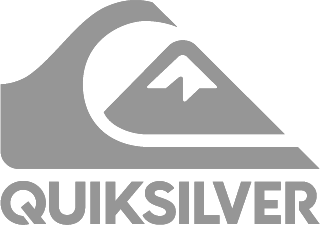Peter Glenn Dryland Training Guide: Week 3
by Jose Triana on Apr 10, 2020
One of the best ways to get outdoors and exercising is with inline skates. Not only are they a great option for cruising around, but if used properly, they can easily give you a workout that will show its effects right into the winter season. Skating gives you all the benefits of an aerobic and anaerobic workout with a lot less impact and wear and tear on your joints. Because of this, it’s become extremely popular as a cross-training method.
In this week’s dryland training guide, we cover some important exercises that you can do with your inline skates. Many of these exercises are taken from Rollerblade’s skate to ski program, a unique program developed in conjunction with US Ski & Snowboard®, Professional Ski Instructors of America®, and the National Ski Patrol®.
Remember to tag us in your workout with #pgworkout
First Things First, Find the Right Skates
Before we even get into the workout this week, it’s important to note that having the right inline skates is important to getting this workout done. Rollerblade has designed a few different skates specifically tailored to skiers and with options to get the entire family involved. This includes:
- Rollerblade Maxxum Edge 90 Inline Skate (Men’s)
- Rollerblade Maxxum Edge 90 Inline Skate (Women’s)
- Rollerblade Cyclone Inline Skate (Kids’)
Of course, if you need some advice on choosing your first pair, we have a helpful video to make that decision simple.
The Warmup
Like any good workout, it’s always a good idea to start a skating circuit with a dynamic workout. You can check back on Week 1 Workout or Week 2 Workout for ideas, but for this week, we can follow along with the program’s suggestion. As you would imagine, a proper workout for skating starts by loosening up with a particular focus on your legs and core.
- Squat Hold: Keep a wide stance and lift arms to shoulder height – parallel to the ground. Keep your arms up and you squat down and hold for about 30 seconds. Repeat five times or as needed.
- High Lunge: Start with your legs apart and alternate shifting weight to each side. Keep your knees over your ankles, without going overly deep. This should be more of a stretch and less of a deep lunge.
- Plank: Start on your abdomen. Either do a traditional plank with your elbows on the ground or a push up stance. Hold for 30 seconds to 1 minute.
Now that your warm, strap on your skates, put on your protective gear, and get ready to hit the road!
Circuit 1
While this workout is still broken up into circuits, it’s important to note that you can easily stick to each set of three exercises as their own workout. For example, one day do circuit 1 and the next do circuit 2. You can also mix and match workouts as needed. Because these exercises require time to improve and refine, limiting the number of movements can offer better results.
Striding for Power
As you’re learning to skate, one of the first things you need to learn is how to have an efficient stride. Instead of having both legs in the direction you wish to move, you always need one leg to be perpendicular. This is your push off leg. When learning, you can try it with one leg at a time. This gets you used to the movement and mechanics.
From there, you can easily alternate, taking larger push offs to improve speed and efficiency. Instead of moving back and forth, you’re essentially pushing out, similar to a swimmer’s stroke. Once you have your movement down, you can integrate your arm and core movement for added power.
As a challenge, be sure to lengthen your strides and increase your speed, gaining more control with every pass.
Angulation Turns
It’s important to test how wide your arcs can get without slipping on your skates. The amount of power and energy you put into your skates will dictate the width and smoothness of the arc. Because you’re not floating on powder, this will require efficiently movement and proper technique.
It’s key that your upper body remains static and your lower body is initializing the turns. That means tight shoulders and a balanced core. If you need help stopping your upper body from tipping, be sure to carry something like pole to prevent flailing.
Make this workout more challenging by finding steeper terrain or tracking your time and working to improve with each lap.
Circuit 2
Hourglass Turns
The hourglass drill is designed to challenge your control and turns. Set up cones like an hourglass at varying widths. Your first set should be about 20 -30 feet apart, second at 10 to 15 feet apart, third, your smallest, at about 3 feet apart, and then mirror the previous two to create the bottom half of your hourglass.
Not only does this drill help to refine your turn ability, it also mirrors the conditions you may find on the slopes. Because there can be obstacles, drops, and changes in snow, you need to be able to turn sharply and quickly. Training this drill will give you those specific skillsets.
Be sure to adjust the cone distance as your progress. You can mix wide turns into tight ones in order to challenge yourself.
Power Carve
Few things on the slopes look as impressive as a powerful carve, but learning how to do it can be tough. The power carve drill is designed to help with that. Unlike other drills that are focused on turns, the power carve workout focuses toe to heel transition.
You’ll make compact turns using your weight to push into each turn, focusing on springing back into the next turn. As you go back and forth, you should be able to spring from turn to turn. The focus should be on linking as many turns as possible as tightly as possible.
Once you’ve mastered doing this on a flat straightaway, you can increase the difficulty by going up an incline.
Bonus Workout
While the other exercises are focused on turns and ski-specific movements, you can still integrate general drills that improve your cardio and conditioning as well. Add the following into your rotation on a weekly basis.
Uphill Skating
Resistance training is always the best way to improve power and cardio. As the name suggests, this workout is pretty simple. Find a slight incline or slope – and skate up. It’s important to find a stretch of road you can easily skate back down, since no one ever want to get stuck.
In order to increase difficulty, or at least the affect on your body, include arm swings. Your core should still remain static and stable, but your arm movements increase power and also boost that cardio aspect of the workout.

Finding Your Perfect Program
The most exciting aspect of the skate to ski program is that it has routines for every level. Whether you’re a beginner or advanced, you can find a phase that works for you. Best of all, many of the movements and exercises build upon each other, so you’ll continue to use that same skillset for each phase.
To find the complete program, downloadable plans, and other helpful guides, be sure to check out our skate to ski page.
Looking for more workout ideas? Be sure to check out our workout playlist on YouTube and visit our blog weekly as we continue to share workout tips and ideas to keep you in shape! Also, be sure to join our community and tag us in your next workout with #pgworkout

 Accessibility
Accessibility































